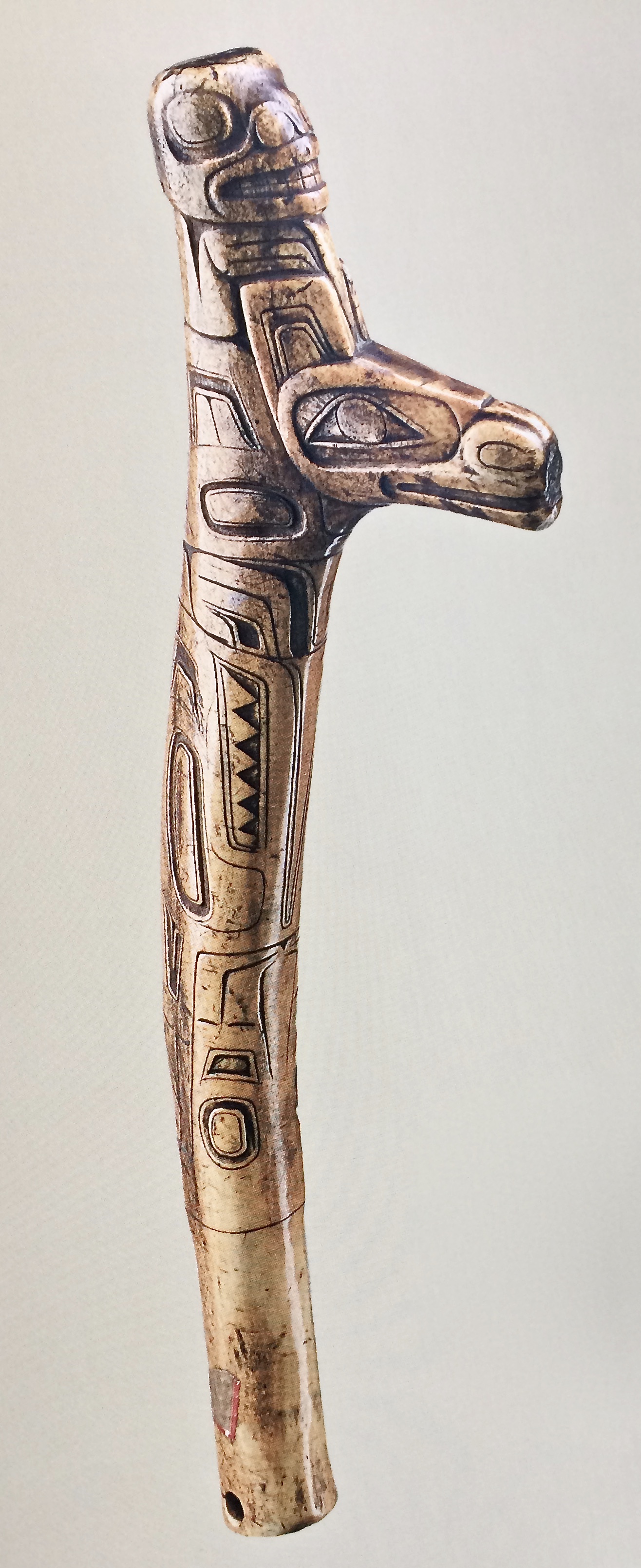Tsimshian mythology on:
[Wikipedia]
[Google]
[Amazon]
 Tsimshian mythology is the mythology of the
Tsimshian mythology is the mythology of the
 Tsimshian mythology is the mythology of the
Tsimshian mythology is the mythology of the Tsimshian
The Tsimshian (; tsi, Ts’msyan or Tsm'syen) are an Indigenous people of the Pacific Northwest Coast. Their communities are mostly in coastal British Columbia in Terrace and Prince Rupert, and Metlakatla, Alaska on Annette Island, the only r ...
, an Aboriginal people
Indigenous peoples are culturally distinct ethnic groups whose members are directly descended from the earliest known inhabitants of a particular geographic region and, to some extent, maintain the language and culture of those original people ...
in Canada and a Native American tribe in the United States
The United States of America (U.S.A. or USA), commonly known as the United States (U.S. or US) or America, is a country Continental United States, primarily located in North America. It consists of 50 U.S. state, states, a Washington, D.C., ...
. The majority of Tsimshian people live in British Columbia
British Columbia (commonly abbreviated as BC) is the westernmost province of Canada, situated between the Pacific Ocean and the Rocky Mountains. It has a diverse geography, with rugged landscapes that include rocky coastlines, sandy beaches, for ...
, while others live in Alaska
Alaska ( ; russian: Аляска, Alyaska; ale, Alax̂sxax̂; ; ems, Alas'kaaq; Yup'ik: ''Alaskaq''; tli, Anáaski) is a state located in the Western United States on the northwest extremity of North America. A semi-exclave of the U ...
.
Tsmishian myth is known from orally-passed tales. An ''adaawx''(or true tellings) is a story concerning animal spirits in human guise and is usually linked to the origin of the Earth and the peoples on it. A ''malesk'', in contrast, is an adventure or history tale that purports to entertain rather than explain.
The Raven
A raven is any of several larger-bodied bird species of the genus '' Corvus''. These species do not form a single taxonomic group within the genus. There is no consistent distinction between " crows" and "ravens", common names which are assigne ...
spirit is known as ''We-gyet'' or ''Txamsem''. Txamsem is said to have a brother named ''Logobola'' who is responsible for the lack of fresh and clear water as well as the existence of the fog into which Txamsem became lost.
The Raven
The Raven, known as Txamsem or Giant, is a central figure in Tsimshian mythology, part of theRaven Tales
Raven Tales are the traditional human and animal creation stories of the indigenous peoples of the Pacific Northwest Coast. They are also found among Athabaskan-speaking peoples and others. Raven stories exist in nearly all of the First Nations ...
mythology connecting the indigenous peoples of the Pacific Northwest Coast
The Indigenous peoples of the Pacific Northwest Coast are composed of many nations and tribal affiliations, each with distinctive cultural and political identities. They share certain beliefs, traditions and practices, such as the centrality of sal ...
. The Raven is viewed as the creator of the universe and an intermediary between its physical and spiritual incarnations.
Tsimshian creation myth presupposes a dark and still universe populated by a variety of animal spirits. An animal chief pampers his son, causing him to fall sick and die, and his intestines are burned. The next day a new youth appears in the bed,
healthy and visible in the darkness, "bright as fire." The boy is adopted by the chief. Initially, this boy does not eat, but slave spirits trick him into eating scabs. This triggers an enormous appetite in the boy, who begins to eat so much that the chief and villagers send him away with a raven blanket. The boy leaves, and becomes Raven.
As Raven arrives in the mainland, he is insatiably hungry, causing great disruptions to those he meets. At various points of the myth he serves as a trickster
In mythology and the study of folklore and religion, a trickster is a character in a story ( god, goddess, spirit, human or anthropomorphisation) who exhibits a great degree of intellect or secret knowledge and uses it to play tricks or otherwi ...
. For example, after creating a slave from rotted wood, he disguises himself as a king and arrives in a village. The villagers tell the slave to invite Raven for dinner, but the slave says Raven is not hungry, and takes the food for himself. Raven builds a bridge from cabbage and as the slave crosses, he falls to his death. Raven descends into the valley to eat the food from the dead slave's belly.
As Raven begins to develop a sense of generosity, he hosts a potlatch
A potlatch is a gift-giving feast practiced by Indigenous peoples of the Pacific Northwest Coast of Canada and the United States,Harkin, Michael E., 2001, Potlatch in Anthropology, International Encyclopedia of the Social and Behavioral Scie ...
, in which he shares food with many guests. As he speaks, he wishes they would all turn to stone, and they do, giving form to a previously immaterial world.{{rp, 176
References